The 2024 Mitsubishi Triton has officially earned a five-star safety rating from ANCAP, becoming the first dual-cab ute crash-tested under the independent safety authority’s latest 2023-2025 protocols. And yes, it passed with flying colours.
If you’ve been eyeing the Mitsubishi Triton for your next tradie tool or family hauler, here’s some peace of mind—it’s not just tough, it’s thoroughly tested for modern-day safety.
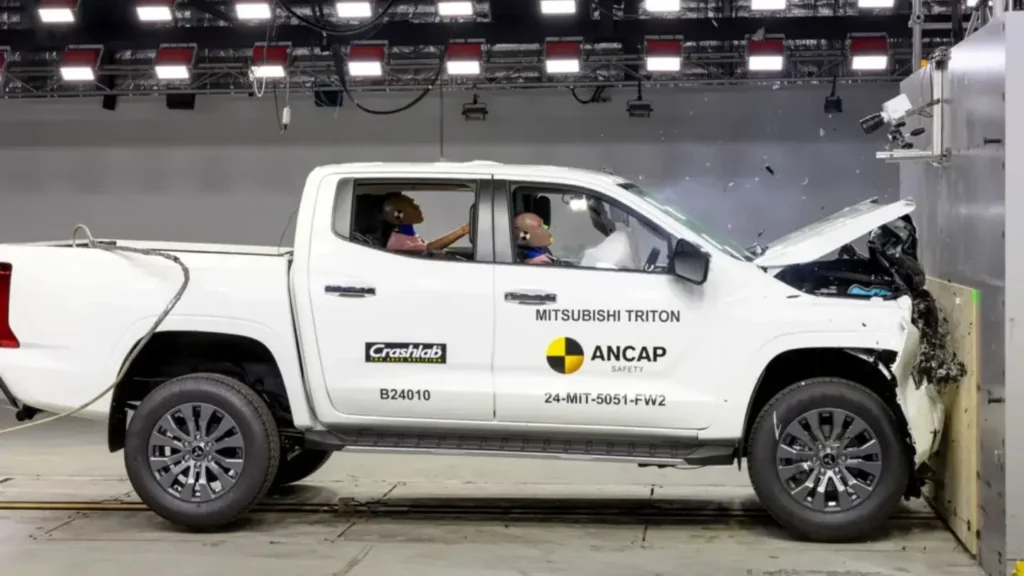
How safe is the 2024 Mitsubishi Triton? Let’s Look at the Scores
Here’s how the Mitsubishi Triton performed across ANCAP’s rigorous categories:
| Safety Category | Score | Rating |
| Adult Occupant Protection | 86% (34.64 / 40) | ★★★★★ |
| Child Occupant Protection | 89% (44.03 / 49) | ★★★★★ |
| Vulnerable Road User Protection | 73% (46.51 / 63) | ★★★★☆ |
| Safety Assist | 70% | ★★★☆☆ |
What do these scores mean?
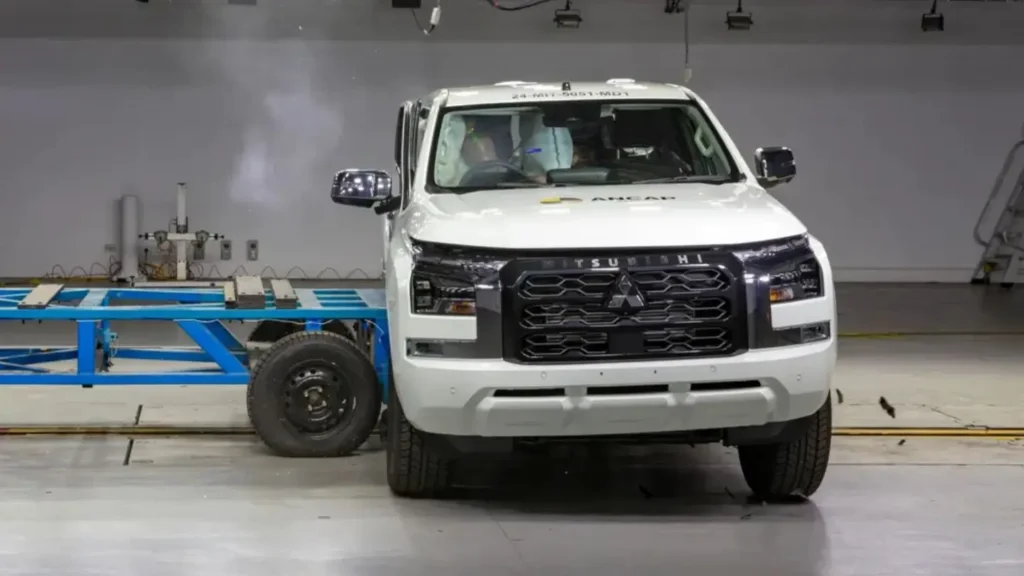
Adult Occupant Protection – 86%
The Mitsubishi Triton excels at shielding drivers and front passengers, scoring near-perfect marks in frontal offset and side pole crash tests. However, rear-seat riders (especially smaller adults) saw weaker chest and leg protection in full-width frontal impacts—a reminder to prioritize seatbelt use and proper seating positions.
Child Occupant Protection – 89%
The Mitsubishi Triton aced child safety, earning full points for protecting young passengers in frontal and side collisions. ISOFIX anchors and clear child-fit guidance helped secure this family-friendly score.
Vulnerable Road User Protection – 73%
This score evaluates safety for pedestrians and cyclists if they were to make contact with the car in an incident. While the Mitsubishi Triton’s bonnet and bumper design reduced injury risks better than most utes, ANCAP noted room for improvement in mitigating head injuries during collisions.
Safety Assist – 70%
The Mitsubishi Triton’s tech suite—including autonomous emergency braking (AEB), lane-keep assist, and a driver monitoring system (DMS)—met basic standards but lagged in advanced scenarios. Its AEB struggled with intersection collisions, and the DMS occasionally nagged drivers during low-speed manoeuvres like parking.
Why the Mitsubishi Triton’s scores matter
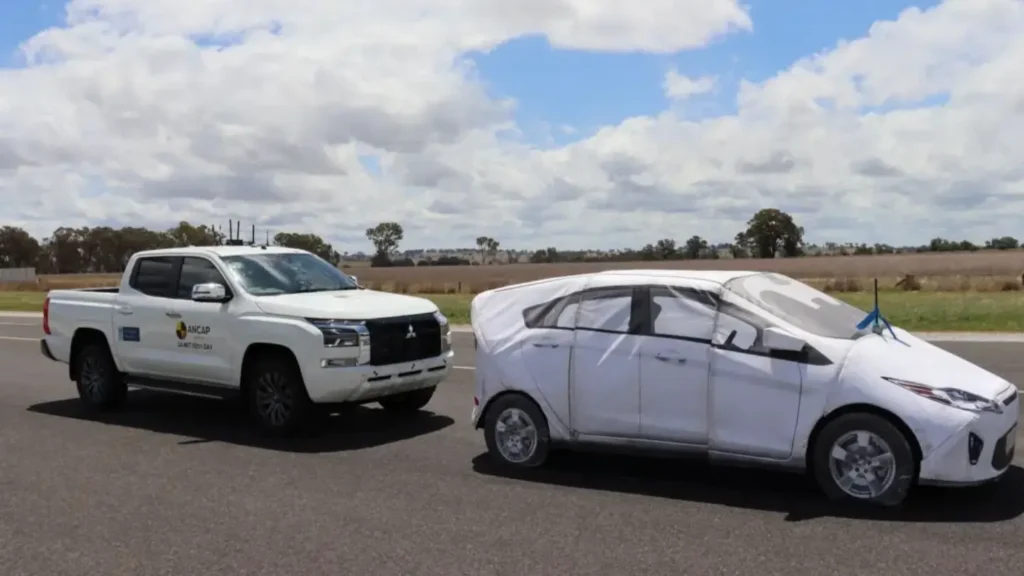
Dual-cab utes dominate Australian roads, blending workhorse grit with family practicality. ANCAP CEO Carla Hoorweg emphasised:
“Buyers expect five-star safety, whether they’re hauling tools or toddlers. Mitsubishi’s result sets a benchmark—but competitors can’t afford to coast.”
While the Mitsubishi Triton isn’t perfect, its balanced performance proves safety and ruggedness aren’t mutually exclusive. For context:
- Adult Protection: Outshines many SUVs (e.g., the 2023 Nissan X-Trail scored 83%).
- Safety Assist: Trails rivals like the Ford Ranger (85% in 2022 testing), highlighting the impact of ANCAP’s stricter 2023–2025 criteria.
What makes the Mitsubishi Triton stand out?
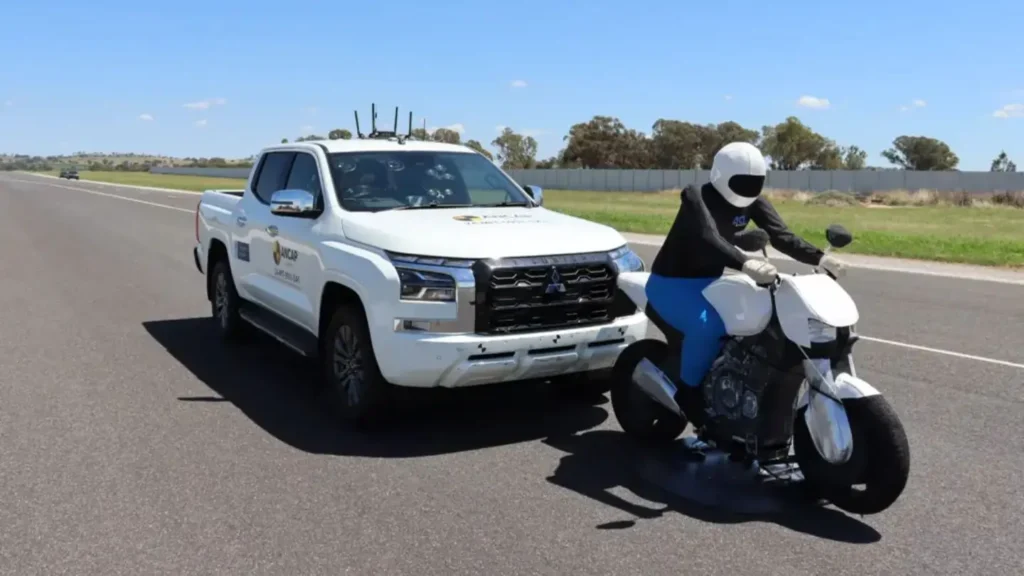
The Mitsubishi Triton’s five-star accolade applies to all Double Cab variants (2WD and 4WD) in Australia and New Zealand, with the rating later extended to include cab-chassis and extra-cab models. Here’s why it impressed:
Peace of mind for most users
The Mitsubishi Triton delivered maximum scores for adult front passengers and child occupants in frontal offset, side pole, and side-impact crash tests. Even in high-speed scenarios, child dummies walked away (virtually) unscathed.
Gets the basic safety tech
Autonomous emergency braking (AEB), lane-keep assist, and a Driver Monitoring System (DMS)—designed to combat fatigue and distraction—helped cement its five-star status.
But it’s not all smooth sailing.
Room for improvement
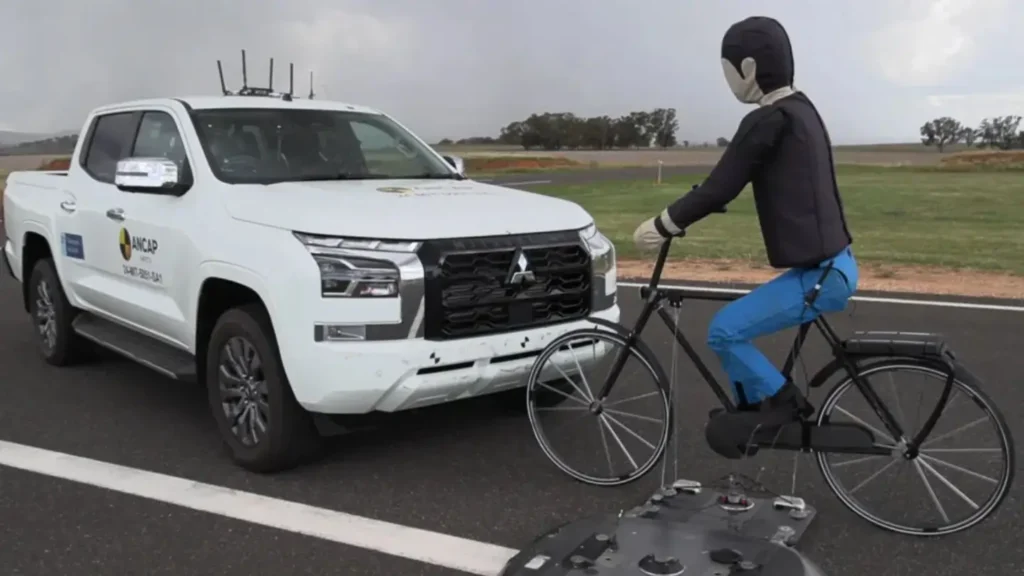
While the Mitsubishi Triton shines in many areas, ANCAP flagged a few caveats for buyers to note:
Rear passenger safety
While the Triton scored an impressive 89% for Child Occupant Protection—reflecting strong performance for properly restrained children—ANCAP also assessed how smaller adults fare in the rear seat. In full-width frontal crash tests, protection for rear passengers was rated “weak” for the chest, with a potential risk of abdominal injury. This highlights the importance of correct restraint use and seating position, especially for smaller or unrestrained occupants..
Limited safety assist capabilities
Though equipped with AEB, the system struggled in complex scenarios like T-bone collisions or head-on crashes, which are common in urban driving.
Annoying alerts?
The Driver Monitoring System met standards for fatigue warnings but drew criticism for pinging drivers with unnecessary alerts during low-speed maneuvers (think: reversing out of the driveway).
The bottom line
The 2024 Mitsubishi Triton’s five-star rating under the tougher ANCAP protocols highlights the growing importance of safety for dual-cab utes. With technologies like intersection-capable AEB and driver monitoring becoming more common, the Triton reflects a broader industry trend, where safety features are gaining importance alongside performance.
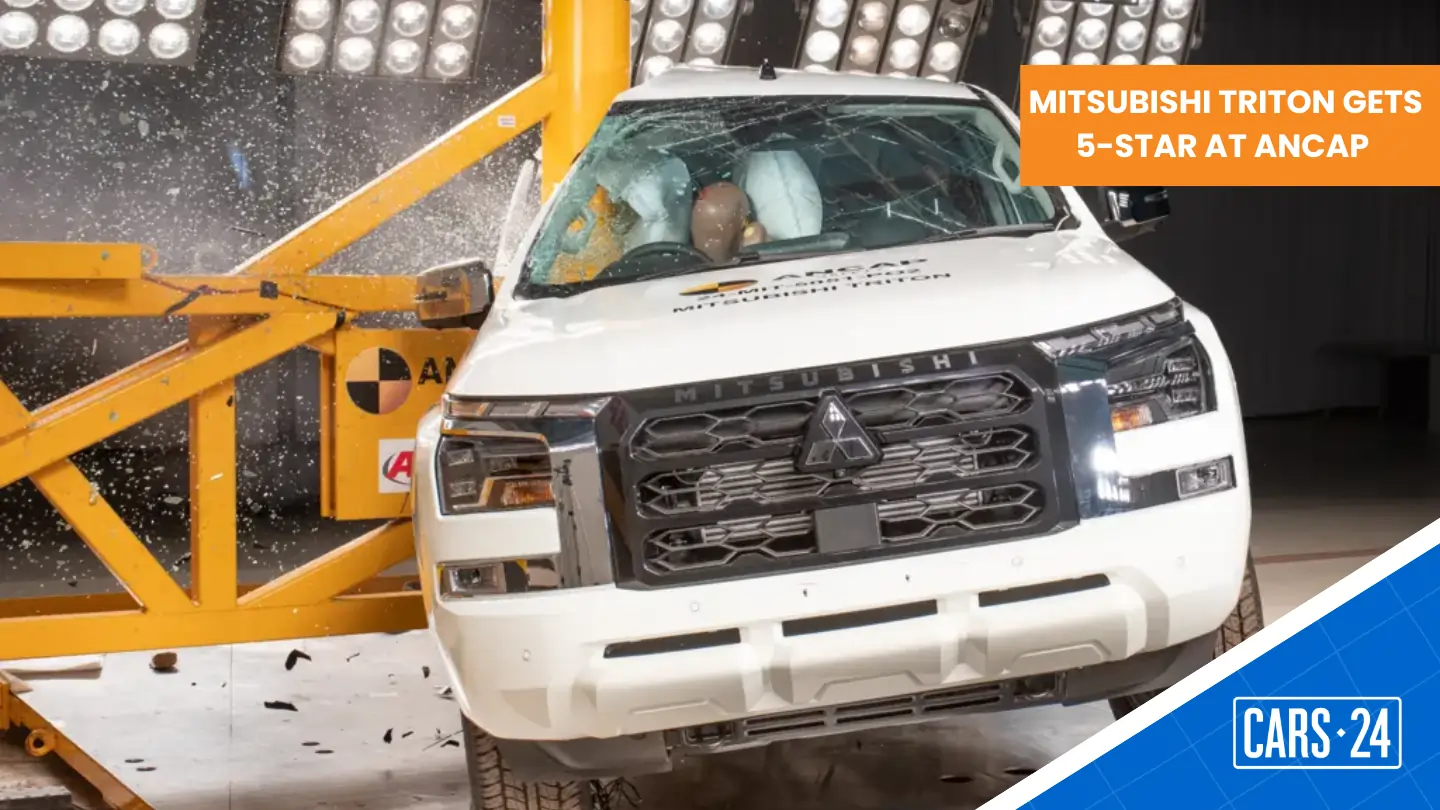
Comments
New Comment